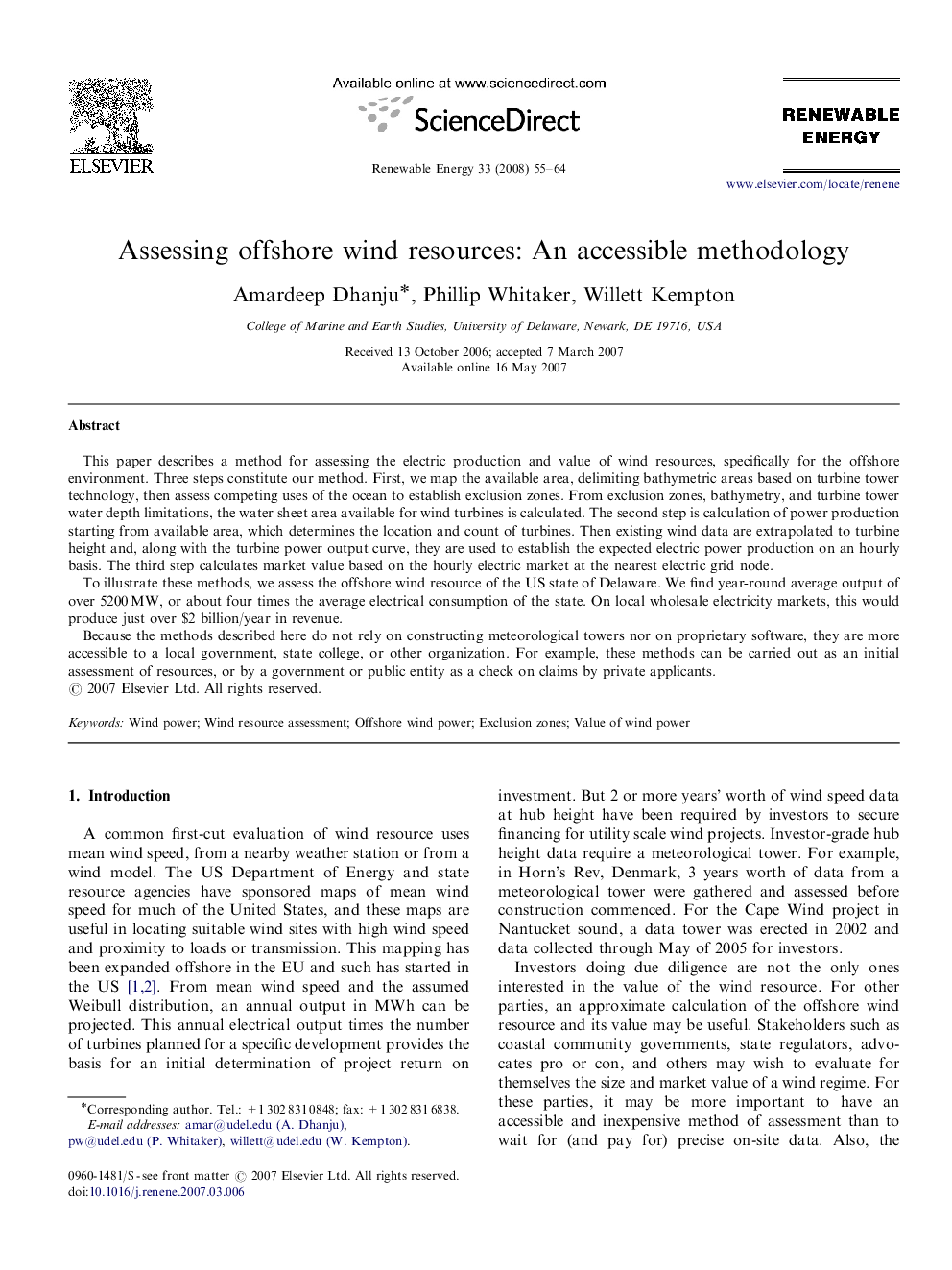| Article ID | Journal | Published Year | Pages | File Type |
|---|---|---|---|---|
| 302689 | Renewable Energy | 2008 | 10 Pages |
This paper describes a method for assessing the electric production and value of wind resources, specifically for the offshore environment. Three steps constitute our method. First, we map the available area, delimiting bathymetric areas based on turbine tower technology, then assess competing uses of the ocean to establish exclusion zones. From exclusion zones, bathymetry, and turbine tower water depth limitations, the water sheet area available for wind turbines is calculated. The second step is calculation of power production starting from available area, which determines the location and count of turbines. Then existing wind data are extrapolated to turbine height and, along with the turbine power output curve, they are used to establish the expected electric power production on an hourly basis. The third step calculates market value based on the hourly electric market at the nearest electric grid node.To illustrate these methods, we assess the offshore wind resource of the US state of Delaware. We find year-round average output of over 5200 MW, or about four times the average electrical consumption of the state. On local wholesale electricity markets, this would produce just over $2 billion/year in revenue.Because the methods described here do not rely on constructing meteorological towers nor on proprietary software, they are more accessible to a local government, state college, or other organization. For example, these methods can be carried out as an initial assessment of resources, or by a government or public entity as a check on claims by private applicants.
